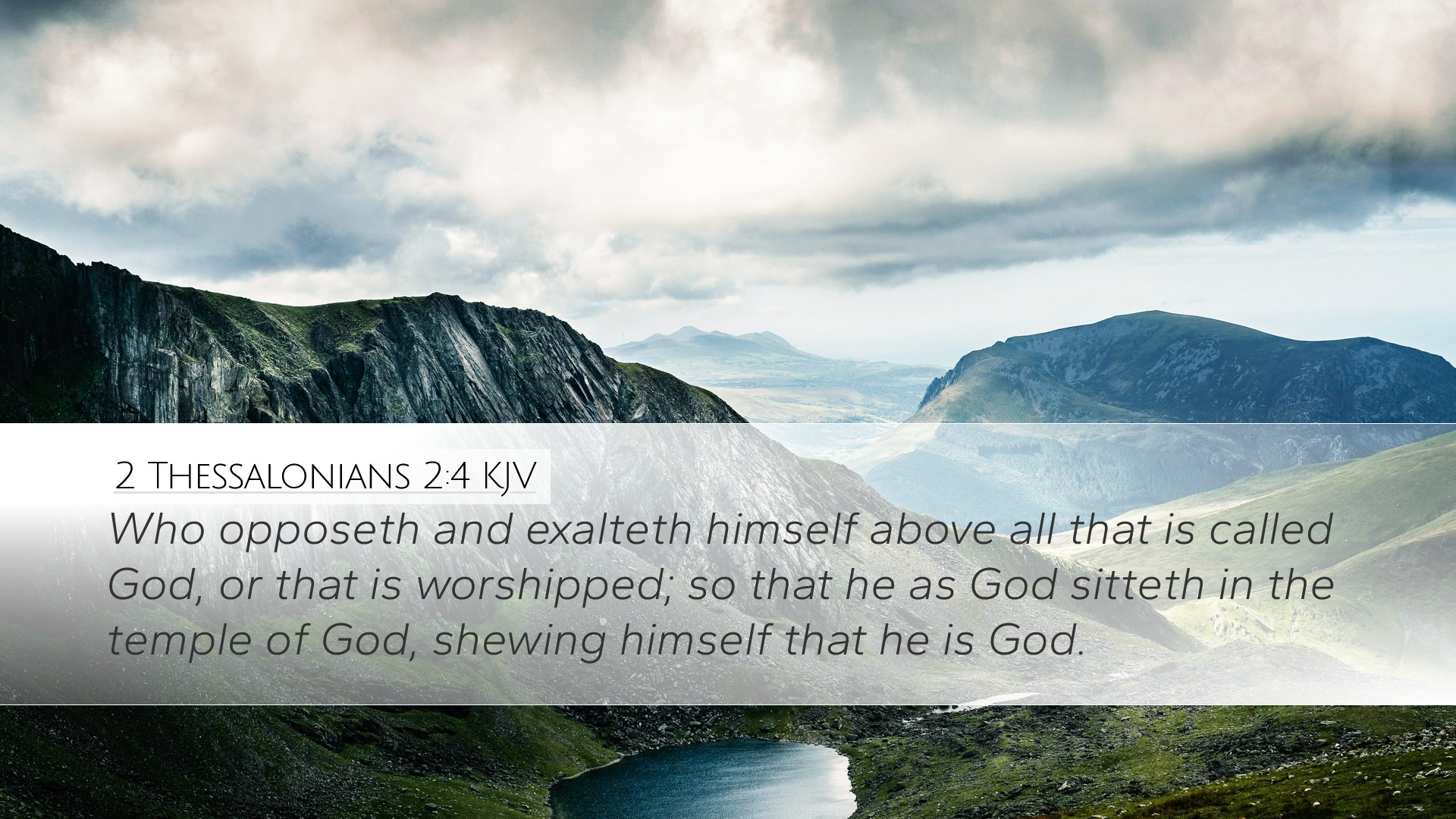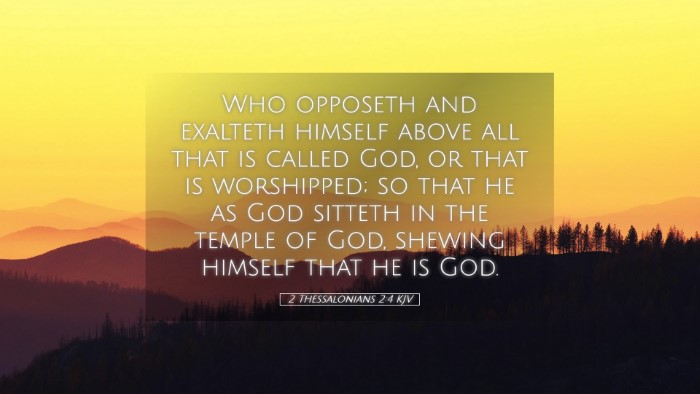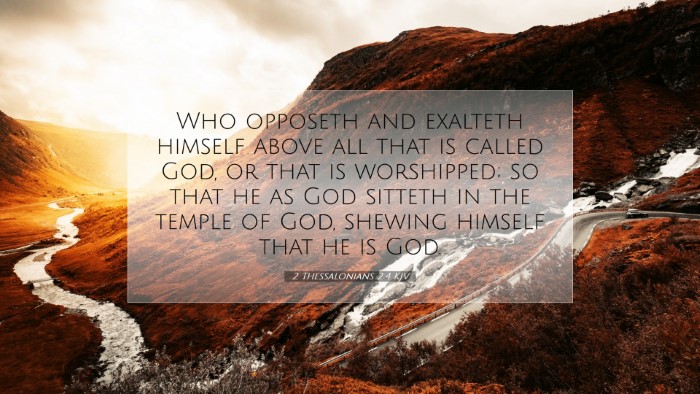Commentary on 2 Thessalonians 2:4
Verse Reference: 2 Thessalonians 2:4
"Who opposes and exalts himself above all that is called God, or that is worshipped; so that he as God sitteth in the temple of God, shewing himself that he is God."
Introduction
This verse is a crucial component of the Apostle Paul’s warning to the Thessalonian church regarding the coming of the “man of sin” or the “lawless one.” In this commentary, we will draw upon insights from various public domain commentaries, particularly those of Matthew Henry, Albert Barnes, and Adam Clarke, to explore the theological implications, historical context, and practical applications of this verse.
Contextual Overview
2 Thessalonians was written in response to concerns that the church had regarding the Day of the Lord and the persecution they were enduring. Paul sought to clarify misconceptions and provide reassurance regarding Christ’s second coming. In this particular verse, Paul describes the behavior and characteristics of a future figure who will oppose God’s authority.
The Nature of Opposition
1. Defining the Opponent:
Henry refers to the opponent as the “man of sin” who embodies rebellion against divine order. This individual not only attacks God but seeks to elevate himself above all that is recognized as divine. This mirrors satanic ambition — to usurp authority meant for God.
2. The Exaltation of Self:
Barnes emphasizes the self-exalting nature of this figure. By claiming to be as God, this individual rejects the true worship due to God alone and invites idolatry, thereby leading many astray. This serves as a caution to believers to remain vigilant against any teaching or leader that would elevate himself above God’s Word and authority.
Context of Worship
1. The Temple of God:
According to Clarke, the temple mentioned symbolizes the place where God’s presence dwells, which, in the context of the early church, may refer metaphorically to the spiritual community of believers. The act of asserting oneself as God within the temple represents a complete perversion of divine order and authority.
2. Worship Practices:
Pastors and theologians would do well to note how worship practices can be corrupted when self-exaltation occurs. The essence of true worship is submission to God's authority, whereas this figure represents the opposite. As believers, there is a call to discernment in our worship and the leaders we follow.
Showcasing False Divinity
The phrase “showing himself that he is God” indicates a deliberate deception. Henry notes that this self-assertion is reminiscent of the aforementioned satanic desire to be like the Most High. Such bold claims are not merely verbal but are demonstrated through actions and signs that attract followers.
Theological Implications
1. Antichrist Figures in Mature Theology:
The concept of the “man of sin” is fundamental in eschatological discussions. Barnes connects this figure with the larger narrative of eschatology where Christ will ultimately defeat all that opposes divine authority. Recognizing these figures helps in producing a faithful response from the church.
2. Judgment and Accountability:
Clarke reminds readers that while this self-proclaimed divinity may seem powerful temporarily, there remains the promise of God’s final judgment. Every act of rebellion will eventually face accountability, suggesting a crucial hope for believers amidst trials.
Historical Applications
1. Early Church Context:
The early Christians read this text in light of their experiences with persecutors and false teachers within and outside the community. It serves as an encouragement to remain steadfast in their faith despite pressures to compromise.
2. Modern Implications:
Today, this passage still resonates as leaders can easily drift toward self-exaltation. It serves as a call for modern Christians to hold their leaders accountable and to cultivate humility and service rather than pride and dominance.
The Call to Discernment
In facing a world where many would seek to displace God, believers are called to exercise wisdom and discernment. Henry’s commentary reminds us that the true characteristics of godliness stand in stark contrast to the traits of the “man of sin.”
Conclusion
The message of 2 Thessalonians 2:4 carries profound implications for understanding spiritual authority, worship, and the nature of falsehood. By reflecting on the insights from Henry, Barnes, and Clarke, scholars and lay believers alike can better navigate the complexities of faith amidst a backdrop of theological opposition.
Ultimately, the verse lays a foundation for understanding our commitment to God, requiring us to reject self-aggrandizement in favor of true humility before the Lord. As we anticipate the return of Christ, let us remain vigilant and devoted in our worship, always placing God at the center of our lives.


